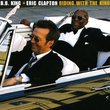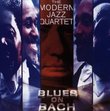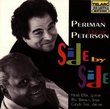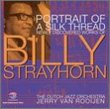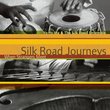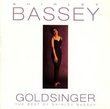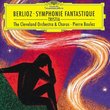| All Artists: Lena Horne Title: We'll Be Together Again Members Wishing: 0 Total Copies: 5 Label: Blue Note Records Release Date: 5/17/1994 Genres: Jazz, Pop, Broadway & Vocalists Styles: Traditional Jazz & Ragtime, Vocal Jazz, Oldies, Vocal Pop, Traditional Vocal Pop Number of Discs: 1 SwapaCD Credits: 1 UPCs: 724382897422, 724382897446, 724382897422 |
Search - Lena Horne :: We'll Be Together Again
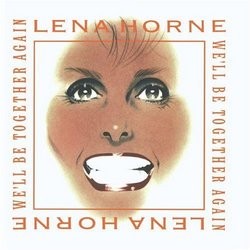 | Lena Horne We'll Be Together Again Genres: Jazz, Pop, Broadway & Vocalists
Lena Horne is nine years older than the 70-something Tony Bennett, and like him has lost a good bit of power and tone from her voice. Unlike Bennett, though, she doesn't try to bull her way through her vocal limits on We'l... more » ![header=[] body=[This CD is available to be requested as disc only.]](/images/attributes/disc.png?v=15401716) ![header=[] body=[This CD is available to be requested with the disc and back insert.]](/images/attributes/disc_back.png?v=15401716) ![header=[] body=[This CD is available to be requested with the disc and front insert.]](/images/attributes/disc_front.png?v=15401716) ![header=[] body=[This CD is available to be requested with the disc, front and back inserts.]](/images/attributes/disc_front_back.png?v=15401716) |
Larger Image |
CD DetailsSynopsis
Amazon.com Lena Horne is nine years older than the 70-something Tony Bennett, and like him has lost a good bit of power and tone from her voice. Unlike Bennett, though, she doesn't try to bull her way through her vocal limits on We'll Be Together Again; she stays within those limits and fashions a striking testament to the subtleties of romance and friendship in one's autumnal years. Billy Strayhorn was one of Horne's very best off-stage friends, and seven of the 16 tracks here were written by Strayhorn and/or his partner Duke Ellington. Three more songs--"My Buddy," "Old Friend" and the title tune--are heartfelt remembrances of those once dearest to Horne and now gone--Strayhorn, her ex-husband, her son, her hairdresser and her wardrobe mistress. --Geoffrey Himes Similar CDsSimilarly Requested CDs
|
CD ReviewsThere Can Be No Better Way to Remember These Performers Stephanie DePue | Carolina Beach, NC USA | 03/16/2009 (5 out of 5 stars) ""We'll Be Together Again" was one of the last records made by the great singer Lena Horne: it was originally released by Blue Note in 1994. The diva, who was born in Brooklyn in 1917, had had an extremely long career, as a pop/jazz/Broadway/cabaret diva, that ran from 1938, when she was discovered singing and dancing at the famous Cotton Club in Harlem, to 2000. She'd been famous since 1943, on the after stream of her worldwide hit "Stormy Weather," from the movie of the same name (Stormy Weather) that was made at 20th Century Fox, while she was a young beauty on loan from Metro-Goldwyn-Mayer. (Although it must be said, at that time and place, her career was greatly limited by her color.)
Horne, who was blacklisted in the 1950's for her political beliefs, has won many awards in her long career. Several Grammies, including a Lifetime Achievement Award; an NAACP Image Award for her civil rights work, and a Kennedy Center Award. She has headlined at the Sands Hotel in Las Vegas, the Cocoanut Grove in Los Angeles, Carnegie Hall in New York, and the Hotel Waldorf-Astoria in New York - her 1957 live album, "Lena Horne at the Waldorf-Astoria" was the largest selling record by a female artist in RCA history. She has made many, many television appearances. But, as she is now well into her nineties, she no longer appears in public. Horne recorded the record at hand following her 1993 performance at a tribute to the musical legacy of Strayhorn. To coincide with its 1994 release, she made her last two public appearances, at Carnegie Hall, and the New York Supper Club. But its genesis was much earlier, to quote from the liner notes of David Hajdu: "It's a prayer: "We'll Be Together Again"--a private, sacred promise to a lost love. And it's fitting: the last time they [Horne, Strayhorn, and Ellington] were together on stage, December 26, 1965, Lena Horne and Billy Strayhorn were praying in song. Duke Ellington, presiding grandly over lavish proceedings at the Fifth Avenue Presbyterian Church in New York, hushed down the assemblage of 14 musicians, 8 singers and one tap dancer. `And now there will be a change in programming,' Ellington said, announcing, with no further explanation, `Billy Strayhorn and his pretty little friend.' A spotlight popped on, and there, snuggled together on a piano bench, the pianist and his friend made music for 1,800 churchgoers exactly as they'd been doing for some 25 years, alone all night at one or the other's home." Horne married elsewhere twice, but often told interviewers that Strayhorn was her closest friend, her "soulmate," and the love of her life, and she had wanted to marry him. However, Strayhorn was basically homosexual, and, the 1940's being what they were, he was said to be tormented about it. His relationship with Ellington, otherwise an enthusiastic heterosexual, is ambiguous; as were the relationships among the three musicians. Be that as it may, Strayhorn's musical gifts were tremendous. In addition to playing piano and arranging, he was a composer of note, and is represented on this record by "Maybe," "Something to Live For," "Love Like This Can't Last," "A Flower is a Lovesome Thing," and "You're the One." Oddly enough, his perhaps most famous songs, "Chelsea Bridge," "Take the A Train," "Satin Doll," and perhaps also his most beautiful, "Lush Life," are not presented here. (Incidentally, I understand you never will find a Strayhorn song available on karaoke, as he wrote only for trained voices.) What is here is packed with emotion, sung by a great singer at the end of her performing career. There can be no better way to remember these performers. " |

 Track Listings (16) - Disc #1
Track Listings (16) - Disc #1



